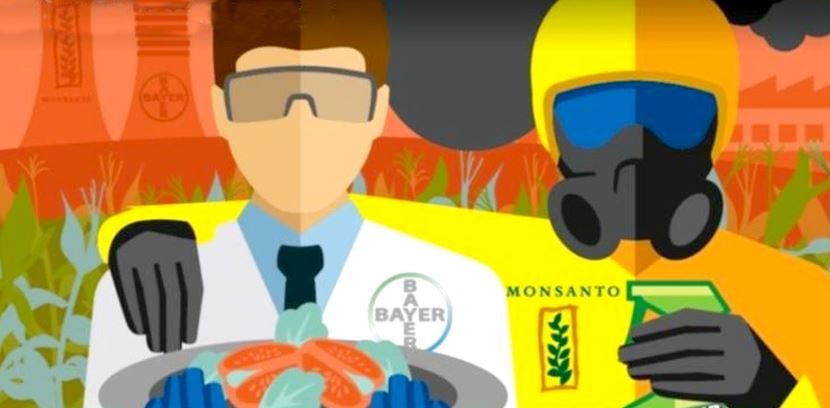Chlorotoluron — toxicity, side effects, diseases and environmental impacts
12/07/2017 / By Michelle Simmons

Chlorotoluron is a contact and residual herbicide that is used to kill broad-leaved weeds and grasses, which include annual meadow grass, black grass, nightshade, bindweed, chickweed, fat hen, marigold, knotgrass, hemp-nettle, dead-nettle, common poppy, and mayweed. It belongs to the group of urea chemicals and can be applied on cereals, such as wheat, barley, rye, and triticale, potatoes, maize, vegetables, such as onions, carrot, and parsnip, and fruits, such as blackcurrant, apples, cherries, strawberry, and gooseberry.
It can be physically described as a colorless crystalline solid and is usually sold as a soluble concentrate or wettable granules that are combined with water and applied as a spray and it can be absorbed by the target through the roots and foliage and works by inhibiting the photosynthetic electron transport. Chlorotoluron has the molecular formula of C10H13ClN2O.
List of known side effects
There are a few known side effects of chlorotoluron. One of the possible side effects of chlorotoluron to humans is that it can possibly cause cancer. Another side effect of the chemical is that it can potentially be damaging to the fertility of a person or it can cause harm to an unborn child. Similar to other urea compounds, chlorotoluron exposure can be poisonous if large amounts are ingested. It can cause irritation to the eyes, skin, and mucous membranes, coughing, and shortness of breath. In addition, it chlorotoluron poisoning can cause nausea, vomiting, diarrhea, headache, confusion, and electrolyte depletion. Furthermore, it can cause protein metabolism disturbances, moderate emphysema, and weight loss with chronic exposure. According to an entry by the Centers for Disease Control and Prevention (CDC), tumors of kidney and liver were seen at high levels of exposure to chlorotoluron in mice. Eye contact exposure can also cause redness in the eyes.
For its environmental side effects, it can be extremely toxic to the aquatic environment that can last for a long time.
Body systems affected by chlorotoluron
The body systems that can be adversely affected by chlorotoluron are the respiratory, digestive, reproductive, ocular, nervous, ocular, integumentary, and endocrine system.
Items that can contain chlorotoluron
Some of the herbicide products that use chlorotoluron as an active ingredient include Tolerate, Alpha Chlortoluron 500, Tolugan, Tolugan Extra, and Dicurane.
How to avoid chlorotoluron
According to the CDC, there are several methods on how to prevent chlorotoluron exposure. Since the chemical can be inhaled, one way to protect oneself from the chemical is to use a local exhaust when working with the chemical. Another way is to wear a breathing protection if needed. To avoid contact with skin, it is important to wear protective gloves. Furthermore, in order to avoid eye contact with the chemical, it is important to use safety goggles. Since it can be poisonous if ingested, a way to prevent ingesting the chemical is to refrain from eating, drinking, or smoking during work. In addition, it is important to wash hand before eating.
Where to learn more
Summary
Chlorotoluron, a urea herbicide, is used against broad-leaved weeds and grasses and is applied on cereals, vegetables, and fruits.
Chlorotoluron is a suspected carcinogen to humans.
Chlorotoluron may cause damage to fertility or to an unborn baby.
Poisoning to chlorotoluron can cause irritation to the eyes, skin, and mucous membranes. In addition, it can cause coughing, shortness of breath, nausea, vomiting, diarrhea, headache, confusion, and electrolyte depletion.
Chlorotoluron poisoning can also cause protein metabolism disturbances, moderate emphysema, and weight loss with prolonged exposure.
Chlorotoluron adversely affects the respiratory, digestive, reproductive, ocular, nervous, ocular, integumentary, and endocrine system.
Chlorotoluron can be extremely toxic to the aquatic environment.
Sources include:
Tagged Under: Chlorotoluron




















